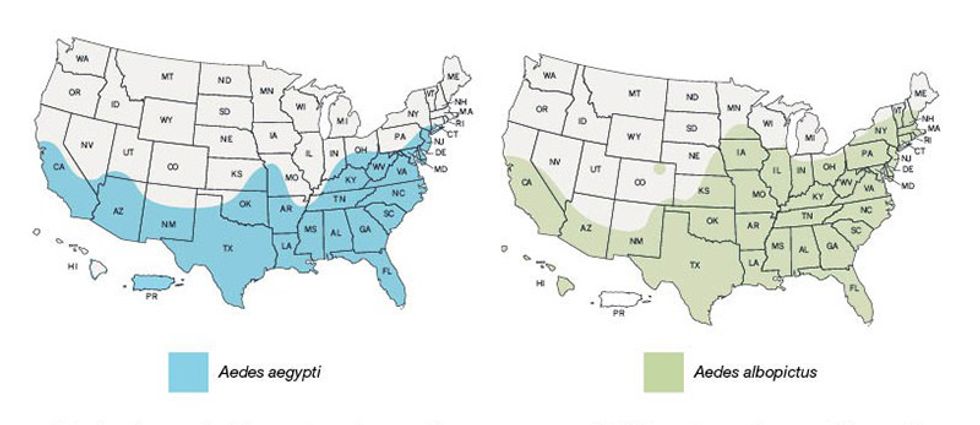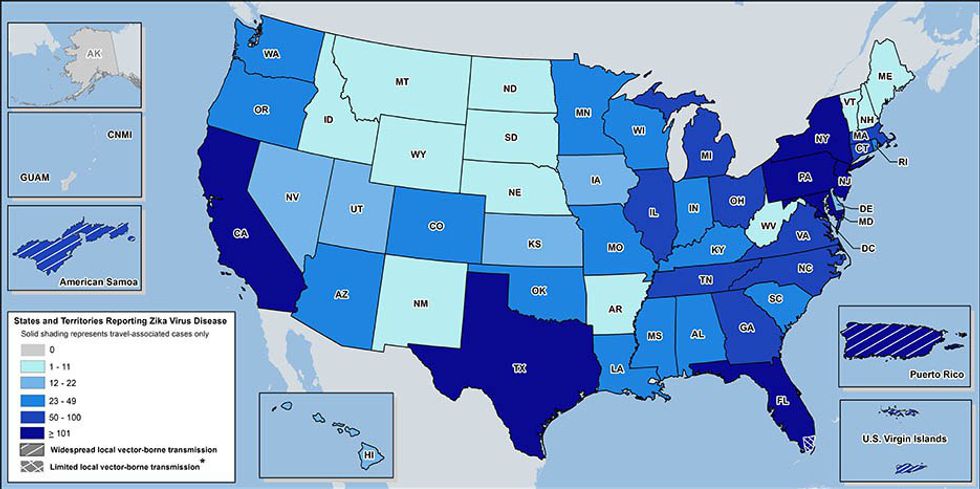As it stands, over 200 children will develop Zika related-microcephaly (abnormal brain development) after the legal limits for abortion within the United States in the next five months. This will drastically impact the American Health care system.
Currently, 1,638 pregnant women in the US have the virus and roughly 13 percent of these fetuses will develop microcephaly. It is estimated that the first signs of microcephaly caused by Zika will arise at 20 weeks into the pregnancy. Twenty weeks is the upper limit for when a woman can receive an abortion in most states. In other words, after 20 weeks, abortions are illegal, which means that the vast majority of these cases will be carried to term. Unless the abortion laws change in the near future, we will likely experience a dramatic increase in birth defects among US citizens.
Zika and Microcephaly
Microcephaly is a condition which results from the head being much smaller than is expected for the age of the patient. This is often due to an underdeveloped brain and can result in developmental and intellectual disabilities, seizures, problems with movement and balance, feeding problems, hearing loss, and vision problems, among other effects. A paper in March of this year estimated that the first signs of microcephaly or abnormal brain development would arise at 20 weeks into the pregnancy. And, as we know, current US abortion laws, in most states have 20 weeks as the upper limit of when a woman can receive an abortion. The CDC has a current count of the number of infected pregnant women in the United States. A recent study suggests that cases of microcephaly of children with Zika infected mothers could be as high as 13 percent. Some simple math reveals that many fetuses will likely develop microcephaly within the near future. And due to current laws, many will likely be born.
Whatever side of the pro-life/pro-choice argument you lie on, the implications that this will have on the American Health care system are clear. We will be forced to reevaluate our laws in the near future to accommodate this epidemic.
As it stands, Brazil, one of the primary countries affected by the outbreak, has doubled its anti-abortion measures. Penalties including jail time for mothers who abort fetuses with microcephaly can go as high as almost five years, and for the physicians performing the abortion sentences can range up to 15 years. Brazil has upwards of 8,000 cases of microcephaly in infants as estimated in July of this year. This is the most recent data available, and it will severely impact the future of Brazil’s healthcare and economy, with higher costs required to accommodate disabled children.
Over 60 percent of the US population is at risk for contracting the virus. The implications of this are clear.
Zika is primarily transmitted through the bite of the Aedes aegypti and Aedes albopictus mosquitos. Up to a week after infection, the virus can be present in the blood stream and spread to other mosquitos, or via blood-blood contact, such as a blood transfusion. Zika can also be transmitted sexually via sperm. Transmission from mothers to fetuses has also been reported. As seen in the image, the ranges of the two mosquito species cover a significant portion of the United States, within this territory lies the majority (around 60 percent) of the US population.
Range of Aedes mosquitos
Map of Lab Confirmed Zika cases
Cases have been reported in every state, except Alaska, but, so far Zika has only been contracted from mosquitos in Florida and in the US territories of American Samoa, Puerto Rico, and the US Virgin Islands.
History of Zika
Zika was first documented in Uganda in 1947 and is named after the forest from which it came. The Zika forest has been used as a mosquito and viral research ground because it contains upwards of 40 different species of mosquitos.
Zika cases arose in humans in the 1960s and 70s in Sub-Saharan Africa and Southeast Asia. Between its discovery and the first outbreak, only 14 cases of Zika were documented. The first major outbreak occurred in Micronesia in 2007 resulting in the infection of roughly 73 percent of the local population. However, no hospitalizations, neurological conditions or deaths were linked with the disease. 2013 and 2014 brought pandemics to the south Pacific in French Polynesia, New Caledonia, the Cook Islands and Easter Island. During these, the first suggestions of additional complications associated with the disease arose. Among these, the Guillian-Barre syndrome, which is an autoimmune disease. In 2015 Zika found its way to Brazil, resulting in the current epidemic that has been spreading across Latin America and into the Southern United States. The first Zika outbreak was reported in the US just under three months ago at the end of July. At the beginning of September, the first mosquitos were found to carry the virus.
Zika may become one of the most influential viruses in terms of policy shaping that our generation has seen in the United States. Already other countries are experiencing the problems associated with the virus and its impacts on future generations.























